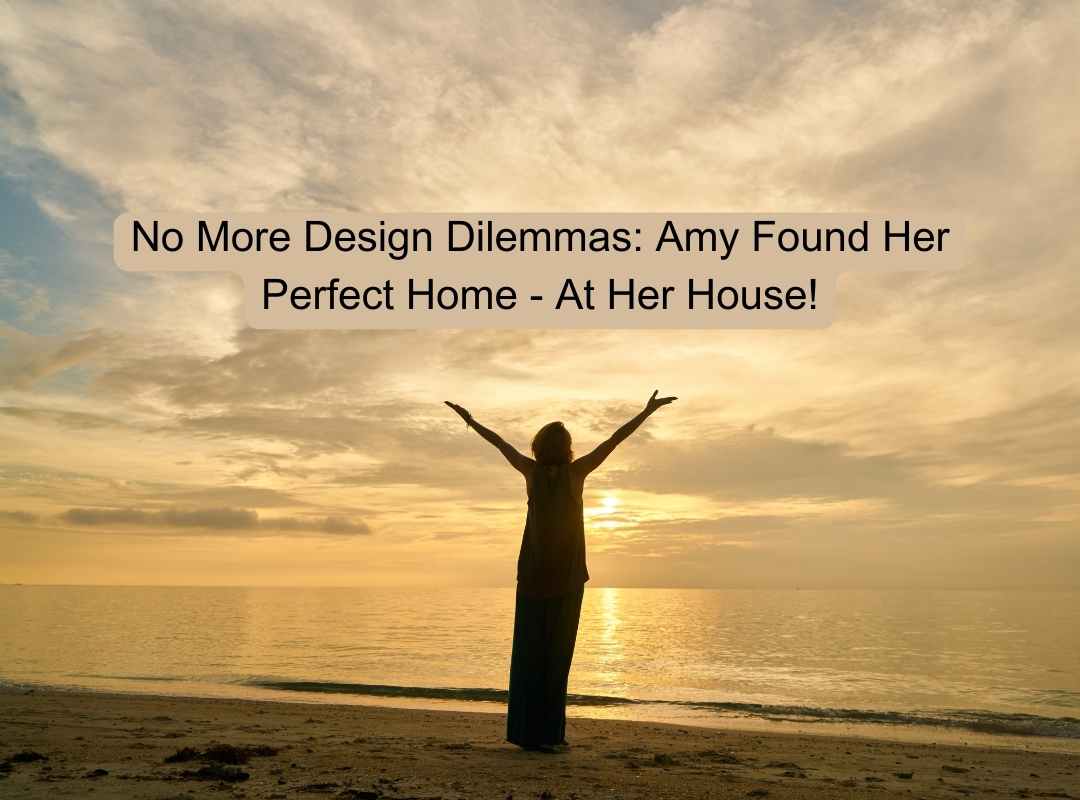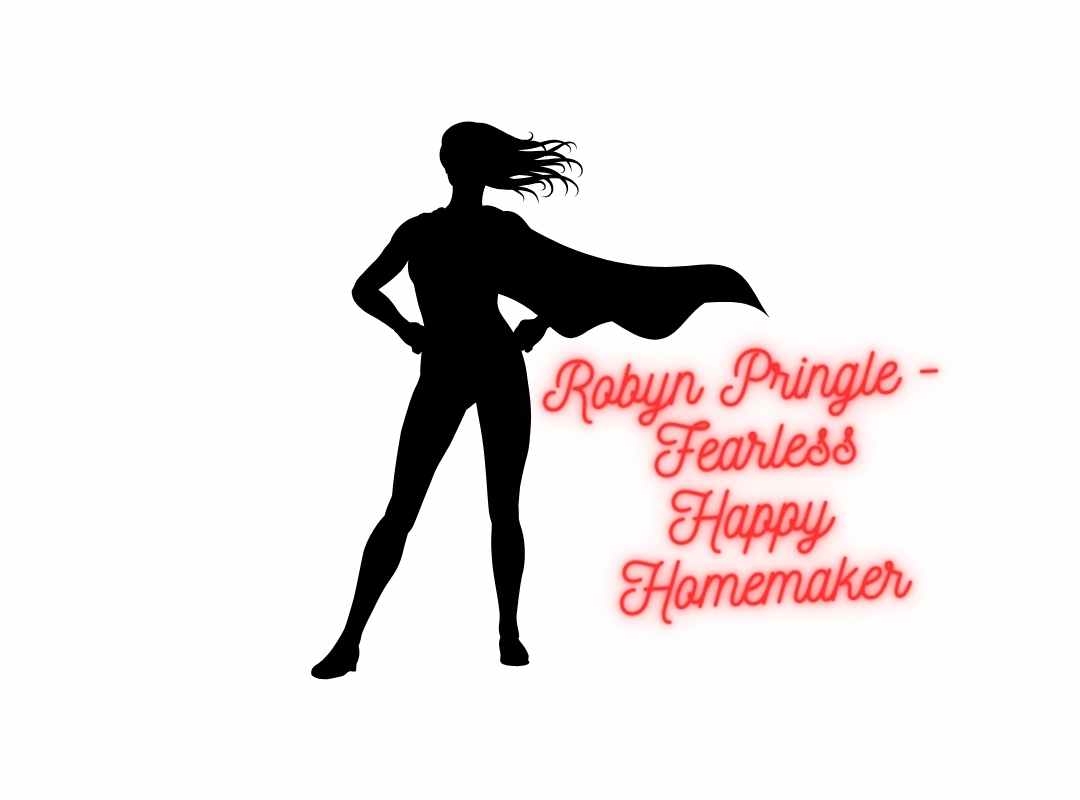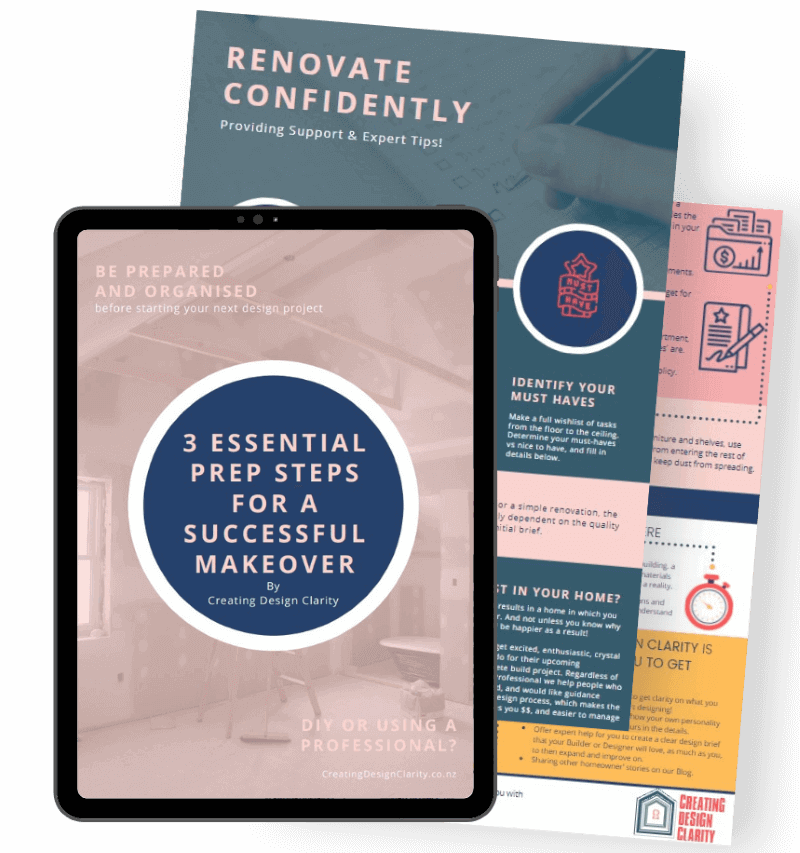You MUST Be Involved in Your Upcoming Room Improvement Project as a Homemaker – that is an Unquestionable Fact – But How Do You Do This Affordably?
Kristina
There is undisputable evidence and research that says you MUST be deeply involved in any home improvement project where you will live in the finished space.
But how can this be cost-effectively achieved?
Imagine: you are sitting in your newly made-over lounge with your partner on Thursday night after a big day at work…
You both agree that the renovation project was a bit stressful at times, but the end result was worth it, as the room now looks fantastic and makes you feel relaxed and refreshed.
Every time you enter the room, a smile automatically appears on your face. It's not because the renovation project was completed within budget (that is another reason why you are happy), but weirdly, the room seems to physically make you feel happier than you usually are!
This has been achieved by you not having to be “creative” or having to learn how to use some “special tool” or “technique”. Nor did you get anxious about making decisions. Plus, the bonus is that you didn’t “kill” your partner because of lack of sleep and paint fumes throughout the house.
How is it possible to finish a home improvement project within budget with minimal stress and overwhelm… and it seemingly provides ongoing elevated feelings of happiness, comfort, and contentment?
And, to be able to guarantee you will be able to replicate this incredible outcome again and again with the future room makeovers you will do in your home?
The Odds Are Against You Achieving Happiness.
Surprisingly enough, extensive research shows only 24.6% of homemakers will LOVE their home improvement project – regardless of whether you DIY or use a design professional!
In addition, the remaining 75.4% of homemakers incur budget blowouts of up to 29.6% of their initial budget. Unfortunately, you also experience high levels of stress, anxiety, and overwhelm that results in anger and frustration with your partner – the nearest person to you.
How Can We Have Such a Large Group of homemakers Who Are Not Satisfied at All?
Reason #1: For Homemaker Satisfaction; It Is Crucial You Are Involved.
“Taking into consideration end-user satisfaction is a key step in the design process of mass products. However, this approach still remains unusual in the [residential] construction industry, even though it has been described as crucial in the evaluation of the quality of a building by its inhabitants” [when researched back in 2001].¹
Yes, you read that correctly. It has been known for 20+ years that you, as a DIYer, or if you use a professional (designer / draughtsperson) and tradespeople (builder / carpenter), SHOULD KNOW BEFORE any design process has started, what your design personality/home design DNA is.
This will enable you to be satisfied with the end result. (This is way more than just your expectations for quality/professionalism, etc.)
i.e. You the homemaker are not asked for your opinion! Or worse, nobody in the industry dares to ask you.
Reasons include:
- For decades, the default for the residential design industry has been a simple 5-page design brief document that you fill out.
Then, over a 3-hour exploratory meeting, your chosen design professional is meant to have heard what you wrote down and verbalised, but they are also meant to understand your hidden and unfulfilled needs and wants down to their ‘Home Design DNA’ level.
Both the homemaker and the design professional believe this is possible and this allocated time is sufficient to really know you. Ignorance is bliss?
- 3rd-party ego; “They use me because of my design style.”
- It is costly for both parties to take into consideration the homemakers' ultimate satisfaction. (See more detailed reasons below).
Reason #2: You The Homemaker Must Be Able To Articulate Your Needs Explicitly
It is very hard for you as a homemaker to clearly communicate your hidden and unfulfilled needs and wants, let alone in a timely manner. “End-users may not be able to articulate their needs explicitly” ²
Reasons include:
- Power imbalance between professional and you, the homemaker. “The design professional must know best.”
- You, the homemaker, don’t consider yourself “creative” or can’t “think of how it might look.” This is very common, but for you to know your home design personality, you don’t have to be creative or visualize the new space in the same manner as a design professional can! (This is a key point).
- You, the homemaker, don’t know your design palette that is unique to you – which connects to your ideal colour palette, patterns, textures, mood, and style. It is these critical areas of your ‘design DNA’ that create the feelings and successful outcomes for the finished project. Your design DNA can only be uncovered by you doing extensive inward thinking, which requires “homework and exercises” to be set, followed up and interpreted.
- Someone needs to create, set, followup and then interpret the answers.
- You the homemaker needs to be willing and passionate about doing this process. (Is guaranteed love and affection for the space motivating enough?)
- Design professionals and tradespeople are not usually qualified in delving into areas of knowledge they are not experts in; behavioral science and the “rabbit hole” called psychology.
Therefore, you tend to give brief and high-level answers to bland questions like these:
- Do you have children?
- How old are they? Do they have special needs/activities or interests?
- How many people live in your home?
- Where is your home located (assuming renovation/building extension or room makeover)
- How will you use this space?
Usually, when you're planning to renovate or decorate a space, you end up letting the designer or a TV show make most of the decisions for you. However, it's important to really delve deep and ask yourself key questions, explore your answers, do your own exploratory research in a guided manner, and document the inner you.
If you are planning a DIY project, this document can guide your decisions. Alternatively, if you are working with a design professional, they can better understand your needs and preferences before presenting their own ideas. Having a clear vision of what you want can make the creative process more enjoyable and efficient. Plus, the end result becomes an external source of joy and improved well-being for you.
Reason #3: Unjustifiable Consulting Hours Required to “Extract” Your Hidden Design DNA.
There has been extensive research on how to extract and learn your hidden design personality or DNA. Here is a quote that is very interesting:
“The importance of end-user participation in the design process of building and construction projects has been recognized and addressed by a number of researchers and practitioners.
The main goal is to ensure that the project outcome meets the facility [building] users' needs.
In order to understand their needs, a variety of approaches (e.g. focus groups, workshops, and questionnaires) for the building end-users participation in the design process have been presented in the literature.
Despite the contributions and practical features of these methods, they require a significant amount of time and effort to conduct and interpret the participants' responses.” ³
One of the main problems is up to now, “a significant amount of time and effort to conduct and interpret the participants' responses.” 3
And this applies whether we are talking about a commercial or residential project.
Architects and interior designers, as well as tradespeople, cannot afford to charge for the time upfront.
Nor can they afford to halt the project to create the time to take your input into consideration… numerous times throughout its progression.
This is due to a number of factors:
- Only a tiny percentage of homemakers are going to spend 40-50 hours working through interview style, one-on-one behavioral related questions and answers at the professionals’ hourly rate. E.g. 40x $92/hour4 = $3,680 Then the interviewer then needs to spend time interpreting the answers and then confirming the outcomes with the prospective client. E.g. 10x $92/hour = $920. A total of ~$4600 before ANY design process has started or plans drawn up. (Especially when you are looking at separate additional design fee5 of ~$5200 which is also separate from all material costs).
- If you are DIY, where do you go to discover your hidden and unfulfilled needs and wants in relation to a room makeover project? There are plenty of retail therapy solutions for buying clothes available, but sadly, not in the area of residential construction or minor room makeovers.
Reason #4: The Design Professional Is Typically Not Trained in How to Ask, Let Alone Interpret, the Design Psychology and Colour Psychology Needs of the Homemaker.
As I mentioned above, there is one thing to design a space around what you want and need from that room. It is also reasonably simple to ask high-level questions that you can easily answer about how you will use the space.
However, the best person to understand you and your design personality… is YOU – cost effectively anyway! But how and is it worth it?
Reason #5: Homemakers and Professionals Are Keen To Get Designing and ‘Doing'
“Effective user involvement in the early stages can be more important and beneficial than other stages, and after effective involvement of users, further involvement may not be required in subsequent phases of the project.”6
Once you have engaged and gotten commitment from a professional of any type (tradesperson, landscape designer, architect, interior designer, kitchen designer, etc), then that 3rd party is now ready to start.
It may have taken weeks to months for them to finally be available and have many other prospective homemakers just like you wanting their services once this job has finished. i.e. the 3rd-party consultant is time poor, and you are eager to see “results”. This does not help with reasons #1, #2, #3 or #4 above.
How Can You Achieve All of This Cost-Effectively for All Parties (homemaker and Design Professional/Builder Etc)?
I believe you get the picture! But how do you ensure you join this elite group of 24.6% of homemakers I mentioned earlier? Let’s find out!
You Must Become Involved at the Beginning – Not “Wake Up” in the Middle of the Project.
Several research studies,7 dating back to the 1990’s confirm the five benefits you receive from being actively involved before the project starts:
- Improved quality of the outcome arising from more upfront accurate user requirements;
- Avoidance of costly features and decor accessories that you did not want;
- Improved levels of acceptance and joy of the space;
- Greater understanding by you, resulting in more effective use of the space; and,
- Increased participation in decision-making gives you democracy, efficiency and commitment which equals less cost overruns.
The ongoing research I conduct, reveals that most homemakers don’t like the look and feel of the changes during the project, and immediately start making quick-fire decisions – “change this, change that”.
In addition, they tack on additional work. Between these two factors, rework starts to blowout the projects' budget; from anywhere from 12% to 29.6%.
Further research has also revealed that you want to be happier than you currently are. People who spend time on, and have an interest in, home improvements are 74% more proud of their home than people who take little to no interest in the project at a granular level.8
In this context, pride = happiness. “Feeling deep pleasure or satisfaction as a result of one's own achievements, results in feelings of increased happiness within yourself, each time you walk into that room, and generally overall, “more happy within.”
By Being Involved + Knowing Your Design Personality = Ongoing Happiness
You need to know your home design personality down to the ‘design DNA’ level.
It is 100% unique to you – which connects to your ideal colour palette, patterns, textures, mood, and style. It is these critical areas that create the feelings and successful outcomes for any home makeover project where you are going to reside in the future.
The Solution?
To know your unique design personality to this depth, can now be achieved cost-effectively in a fun and practical environment in the comfort of your home, or anywhere you have access to the internet.
Before starting any form of design process (ideally months prior), you enrol in your ‘Unique Home Design Personality’ part-time course from Creating Design Clarity. Or you might be referred to this course by your chosen design professional.
By taking a few hours each week over a 10-week period, you enjoy learning about your unique design DNA – which connects you to your ideal colour palette, patterns, textures, mood, and style preferences. It is these critical areas that create the feelings and successful outcomes for ANY residential project you want to do now or multiple times in the future. You typically do 3 major makeovers in your home – bathroom, kitchen, and lounge/living room. Many homemakers also refresh their bedrooms and outdoor living areas.
One of the pieces of research out of the software industry is also applicable in the residential room improvement industry I found doing my own extensive research;
“Effective user involvement in the early stages can be more important and beneficial than other stages ( Kujala 1 2008;Kujala et al. 2005), and after effective involvement of users, further involvement may not be required in subsequent phases of the project.” (Wu & Marakas 2006)9
In otherwords, put in the time upfront to get to know you on a deep level and express that clearly and concisely to all parties involved in your project, even if it is just you and your partner as DIY, and the rest of the project “falls into place” with minimal stress and decision-making.
You can become a ‘Fearless Happy Homemaker®’.
You can join the 24.6% of homemakers around the world experiencing an ongoing love and affection for their finished home improvement project. With all the benefits and none of the downsides listed above!
Benefits include:
- You experience near-zero rework due to being 100% prepped for the upcoming home project.
- You minimise stress and overwhelm during the project. You clearly articulate what you want from the project.
- You make sound decisions.
- You do not restrict the creative genius of your chosen design professional (architect, interior designer, kitchen designer, or landscape designer) or build and design team. As a DIYer, your creative flair is unleashed to its fullest potential.
- You feel ongoing increased happiness generated “within you” from the environment the project creates for you (and your partner). Every time you walk into the finished space – for potentially decades into the future.
To get the above benefits, have a look at the details of your ‘Home Design Personality’ course here. Plus the entire process is fun!
- 100% risk-free guarantee: If, during the course you are not happy with it, you can get a full refund.
- Your partner can do the course with you at the same time for no extra cost.
- Once you have documented your design personality, you can use it over and over again with each future home improvement project you are involved in.
- You save up to 29.6% of your project costs from being wasted due to embarrassing and expensive rework.
———————————-
References:
- https://hal.archives-ouvertes.fr/hal-01360417/document
- https://www.researchgate.net/publication/4186939_The_role_of_user_involvement_in_requirements_quality_and_project_success
- https://www.researchgate.net/publication/282929769_Measuring_End-User_Satisfaction_in_the_Design_of_Building_Projects_Using_Eye-Tracking_Technology
- In New Zealand 2020 Builder is charging $80+GST/hour. Design Professionals vary between $125+GST to $250/hour____. https://www.forbes.com/advisor/home-improvement/cost-to-hire-interior-designer/#:~:text=Most%20interior%20designers%20charge%20for,including%20the%20cost%20of%20furniture.
- https://www.forbes.com/advisor/home-improvement/cost-to-hire-interior-designer/#:~:text=Most%20interior%20designers%20charge%20for,including%20the%20cost%20of%20furniture.
- www.researchgate.net/publication/4186939_The_role_of_user_involvement_in_requirements_quality_and_project_success
- https://hal.archives-ouvertes.fr/hal-01360417/document
- https://docs.google.com/spreadsheets/d/14Nh2u4lJCzWUmDHwvNWbK5XpEWQjjNImLkq6a_6A1_k/edit?usp=sharing
- https://www.tandfonline.com/doi/full/10.1080/01449290601111051








